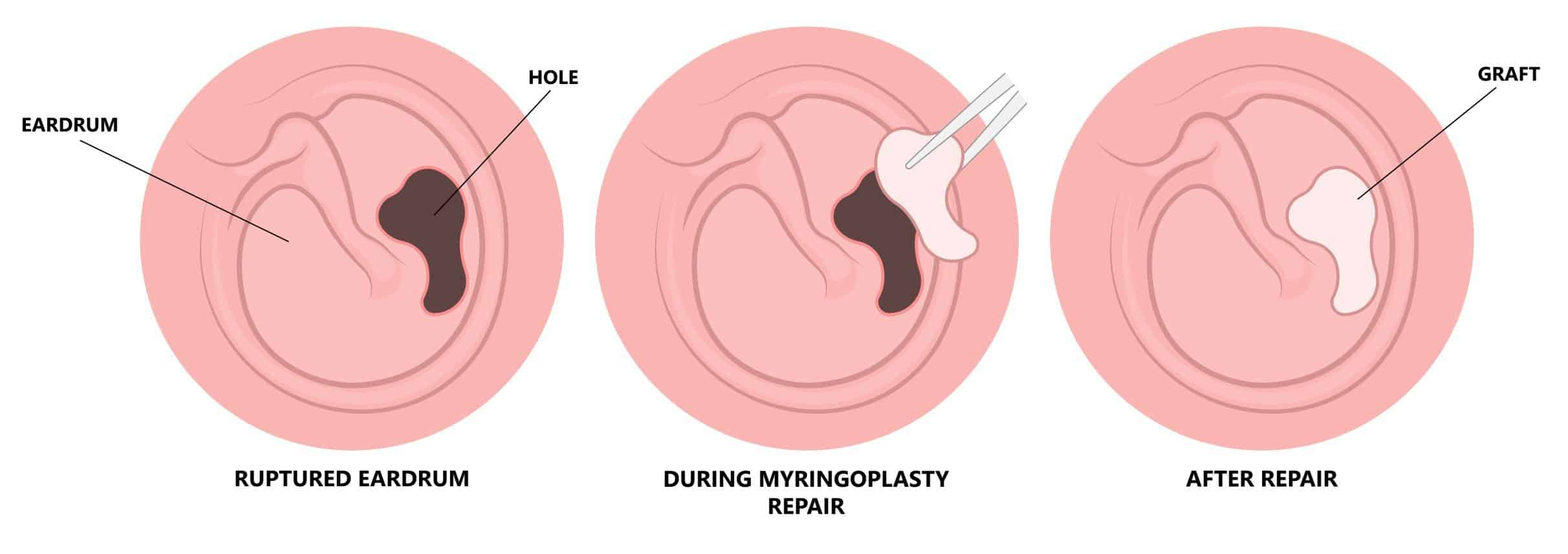This article is for educational purposes only. It should not be used as a template for consenting patients. The person obtaining consent should have clear knowledge of the procedure and the potential risks and complications. Always refer to your local or national guidelines, and the applicable and appropriate law in your jurisdiction governing patient consent.
Overview of Procedure
Myringoplasty is a procedure performed to repair a tympanic membrane perforation, performed under general anaesthesia.
A graft of fascia, cartilage, or perichondrium is taken to repair the defect in the tympanic membrane, typically harvested from the temporalis fascia or tragus cartilage.
The primary intended benefit of myringoplasty is to prevent recurrent middle ear infection, with a secondary benefit of potential improved hearing.
Complications
Intra-Operative
| Complication | Description of Complication | Potential Ways to Reduce Risk |
| Bleeding | A rare complication from this type of surgery, however may occur in anatomical variations of the position of the sigmoid sinus | If the patient has a high-resolution CT pre-operatively, the position of the sigmoid sinus should be carefully inspected |
| Anaesthetic risk | Includes damage to the teeth or larynx from intubation, adverse reaction to drugs, nausea and vomiting, cardiovascular and respiratory complications. | Part of the anaesthetic assessment before an operation. |
Early
| Complication | Description of Complication | Potential Ways to Reduce Risk |
| Pain | Most people will experience discomfort after the operation | Ensure patient is prescribed regular simple analgesia post-operatively |
| Infection | Whilst infection of the graft site, donor site, or middle ear cavity is possible, this is uncommon | |
| Bleeding | Any packs in situ should not be removed until the first clinic follow up (even in the context of bleeding post-operatively) | |
| Allergic reaction to packing material | The packing used (BIPP packing) may cause a localised reaction, resulting in the pinna and soft tissues becoming hot and erythematous within 24-36 hours | Alternative dressings should be used if patient is known to be hypersensitive |
| Tinnitus or dizziness | This is usually transient |
Late
| Complication | Description of Complication | Potential Ways to Reduce Risk |
| Graft failure | A small proportion of patients will have graft failure, whereby the graft does not take on the eardrum | Encourage smoking cessation peri-operatively |
| Hearing loss | Whilst uncommon, this can occur if the ossicular chain is disrupted intra-operatively | |
| Facial paralysis | Caused by damage to the facial nerve; can be complete or partial, however fortunately is very rare | |
| Taste disturbance | Caused by damage of the chorda tympani, as this runs across the superior tympanic membrane; most cases improve with time, however rarely can be permanent |

